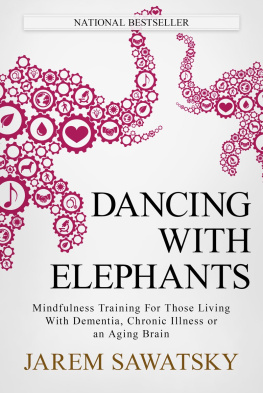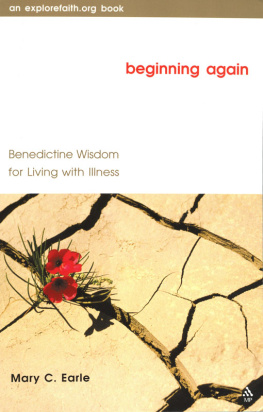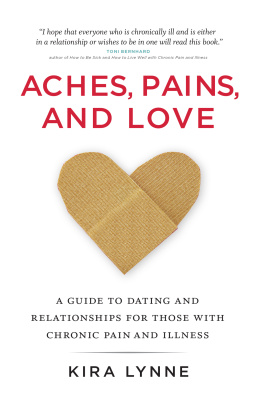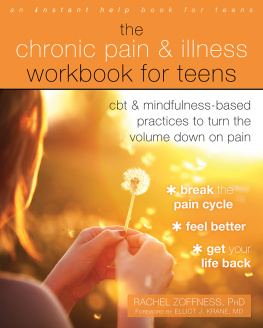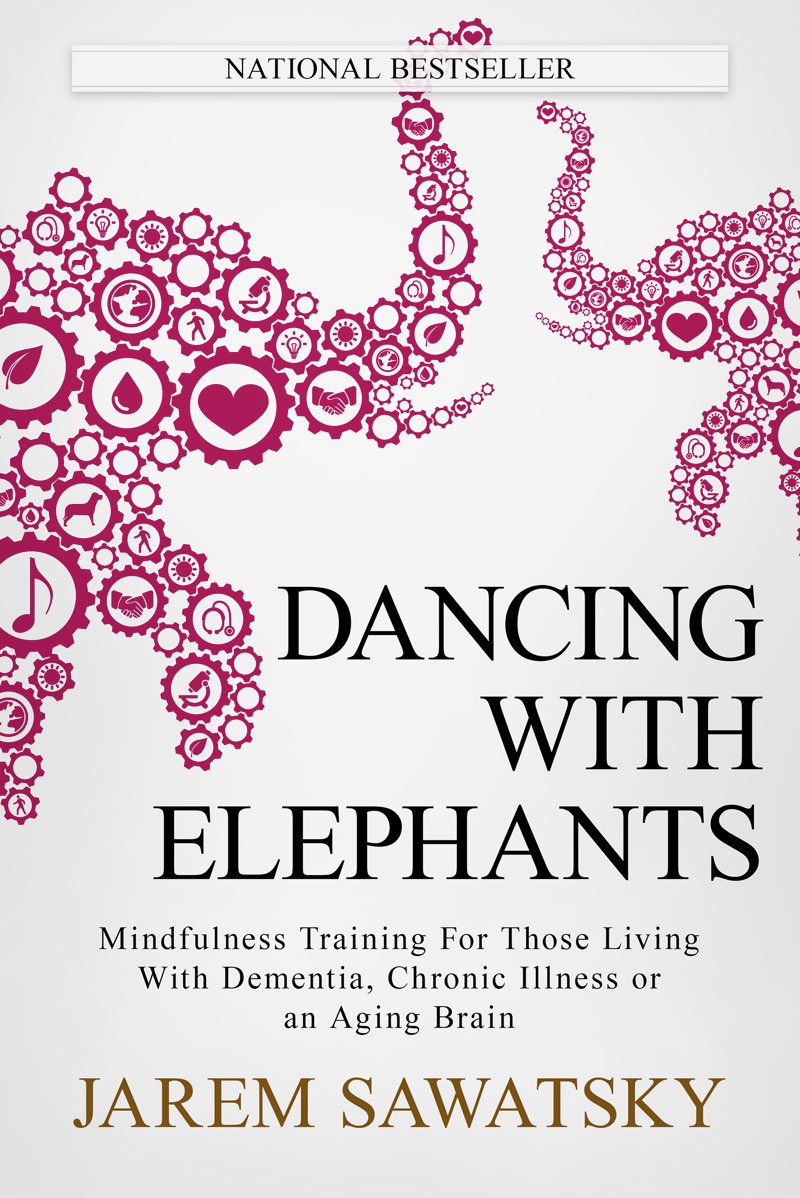Get 5-Part Video & Audio Series
For FREE
You have Vol 1 in the How to Die Smiling Series. Get Vol 2 free .
A More Healing Way :
Video Conversations on Facing Disease
featuring Jon Kabat-Zinn, Patch Adams, Lucy Kalanithi ,
John Paul Lederach and Toni Bernhard .
Hosted by Jarem Sawatsky ($200 value ).
Details can be found at the end of Dancing with Elephants .
Reading Guide for Dancing With Elephants (great for individuals and book clubs) available at :
www.jaremsawatsky.com/dancing- guide
Praise for Dancing With Elephants
I n Dancing with Elephants, Sawatsky beautifully models a way to dance in the gale of full catastrophe, to celebrate life, to laugh with it and at himself, even in the face of personal failure and defeat .
- JON KABAT-ZINN, national bestselling author of Full Catastrophe Living
In Dancing with Elephants, Jarem Sawatsky offers a powerful example of the art of real happiness. This inspiring story reminds us just how essential it is to bring lovingkindness into every step of life, no matter how difficult the path
-SHARON SALZBERG, New York Times bestselling author of Real Happiness
forthright and inspiring people facing a chronic illness in themselves or in a loved one will learn from his honesty and openness .
-PETER V RABINS, co-author of The 36-Hour Day
Life can be tough and it's even tougher without the ability to find humor. You're either going to laugh or cry, so you might as well laugh. When life seems to be falling apart, Jarem Sawatsky's interesting and entertaining book reminds us that laughter is what we need to not take ourselves too seriously .
-JEN MANN, New York Times bestselling author of People I Want to Punch in the Throat
This is a beautiful and inspiring book. It is full of humor and wisdom about the pain of loss in our life, by a man who is living the severe loss of a debilitating disease. It is a book that we should all read so that loss be not transformed into anger or depression, but into love and radical acceptance .
-JEAN VANIER, national bestselling author of Becoming Human
Chapter 1 - Facing Elephants
D earest Elephant Dancer,
I know nothing about elephants nor dancing. And yet, this is a training manual and love letter for elephant dancers like yourself .
Facing elephants is something we often avoid. Most of us have elephants hidden in our closets, or hidden in plain sight. These elephants are our big, unacknowledged fears .
What are your elephants? What do you fear? Who gave you these elephants? How can you learn to love and dance with your elephants ?
In this book, I serve as your guide in teaching the art of dancing with elephants. One of my big elephants is Huntington's diseaseonce called the dancing disease! It's an incurable, genetic, progressive, fatal brain disease. It is kind of a combination of Parkinson's, Alzheimer's and Schizophrenia. Just picture an elephant with this combo! That picture makes me laugh now. But I have not always been laughing .
Ive never really known life without Huntingtons disease lurking somewhere in the corner. Huntingtons is genetic and so is passed down from generation to generation. It is a slow train wreck of a disease, sometimes lasting up to 25 years from first symptoms to death. In the olden days people would say, "Stay away from those familiesthey go crazy as they age and it is not pretty. When I was a child, my grandmothers generation had Huntingtons, as did some of our more distant relatives. Several of them were put in asylums because not much was known about the disease. I was told to not worry because a cure would surely be found by the time I developed it, if I ever did. When I was in my teens, it was moms generations turnmy mother had it, as did all her siblings except for two brothers, one of whom was adopted. Huntingtons seemed like a massive earthquake that left mostly rubble behind. As a teen, I was part of that rubble. When I started university, I began to focus on conflict and peace studies. I was interested in finding more healing ways to deal with injustice, harm, fear, and violence. By grace, I fell in love with Rhona Hildebrand, an elementary school music teacher. Before we were married, we had to have some careful discussions about Huntingtons diseaseyes, you can meet my mom but she is not well and can be quite explosive. No, I guess she doesnt treat me like a son I told Rhona she should consider seriously whether she wanted to marry into a Huntingtons disease family. I nervously awaited her response. In hindsight, I learned I had two things working in my favour: 1) She was raised by people who modeled loving through lifes ups and downs and 2) I am a very good kisser and Rhona was hooked. So we got married. Rhona said we needed to include in sickness and in health in our vows. And so we did. After a couple of years of marriage, we moved to Virginia for a year so that I could earn a masters degree in conflict transformation. During that year, we got pregnant with identical twin girls. We moved back to Canada, where our wonderful daughters, Sara and Koila, were born. I taught conflict studies at two universities in Winnipeg. Teaching turned out to be a great fit, but I knew that if I wanted to continue to teach at the university level, I would need to get my doctorate. So I applied and got a full scholarship to the University of Hull in England. We moved there when the girls were three. It was in England that I started my research into communities that practiced healing justice. I traveled around the world, visiting Thich Nhat Hanhs Buddhist community in France; Hollow Water, an Indigenous community in Canada; and the Iona Community, a Christian community based in Scotland. These places are living examples of community life where injustices are addressed with healing and love rather than punishment, judgment, and fear. During this time, my mom died from Huntingtons disease at the age of fifty-eight. We had to fly back from England for her final days and the funeral. Two years later, I completed my studies and was re-hired as Assistant Professor at Canadian Mennonite University. I published two booksone about research into restorative justice and peace-building that I had written in Virginia and the other about the three communities of healing justice that I had studied in England. My career as a teacher, researcher, and author was going very well. I got a government grant to allow me to continue travelling the world searching for communities of healing justice. The girls were in school and Rhona was back at work half time. Life was good. But we knew that because my mom had Huntingtons disease, I had a 50/50 chance of getting it. My mothers main coping mechanism was to deny that she even had the disease. This left too many elephants lurking in the corners. There was a DNA blood test I could take that would tell me if I had inherited the gene for the disease. My mom could have had the test done a decade sooner than she did. While denial may have provided her some comfort, it made it profoundly difficult for any of us to support her on the journey. I wanted to chart a different path. First, I applied for early promotion at work. Once I was approved, both me and my brother had the testing done. I was positive. He was not. I would develop the disease. My daughters now had a 50/50 chance of having the disease .

